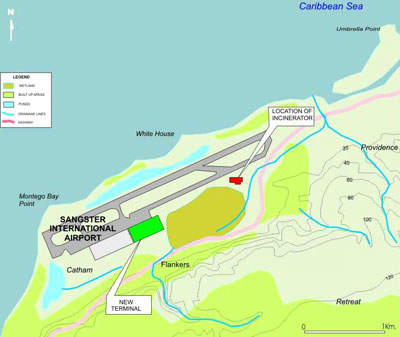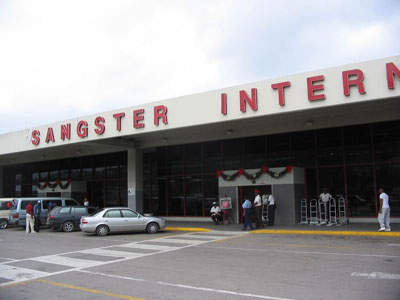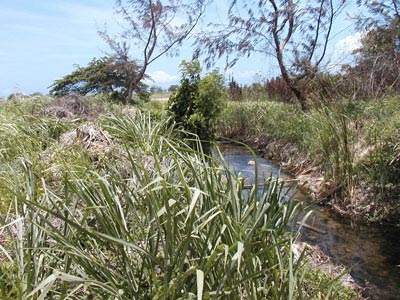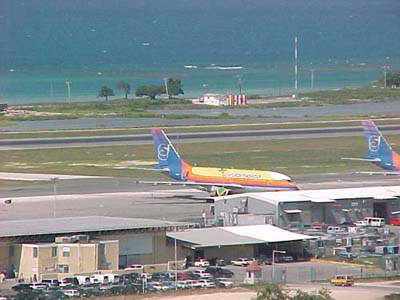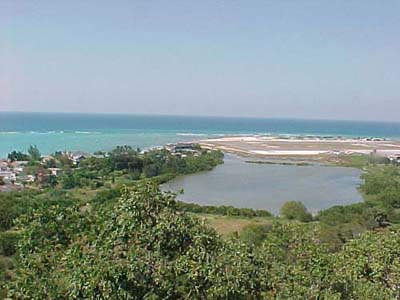Sir Donald Sangster International Airport is the largest international airport in Jamaica and serves the popular Montego Bay resort, which is just 6km east of the airport (Montego Bay is Jamaica’s second largest city).
Sangster is usually referred to as the gateway to the Caribbean as it is the most popular airport for tourists visiting the north coast of Jamaica, processing over 60% of the country’s visitors. Since the airport was first opened in 1947 it has gone
through countless upgrades and expansions, including the construction of a new terminal building in 1959.
In January 2001 an agreement was reached for a significant upgrade of the airport’s facilities on a build operate transfer basis between the Government of Jamaica, the Airport Authority of Jamaica (AAJ) and the contracted consortium MBJ Airports
Ltd.
The National Investment Bank of Jamaica (NIBJ) handled the process for awarding the contract. MBJA Ltd was granted a 30-year concession to operate the airport including restaurant, duty free and commercial services from March 2003.
MBJ Airports is a consortium of four companies: Agencias Universales SA (AGUNSA) (35%), Dragados Concesiones de Infraestructuras SA (Dragados Concesiones) (35%), YVR Airport Services Ltd (YVRAS) (15%) and Ashtrom (15%) an Israeli construction company.
YVR, which is a subsidiary of the Vancouver International Airport Authority, will provide technical training and assistance. The airport had traffic of more than 3.5 million passengers in 2005, with operating profit of €7.1m ($7.55m) and revenues of
€21m ($22.3m).
FINANCE AND CONSTRUCTION
The three-phased expansion project for the airport began with phase 1A in March 2001. The budget for the airport expansion was initially set at $175.5m (JAM$10.5bn, €165m). This first phase (1A) included the installation of six jet bridges on the
existing terminal and the installation of a modern, computerised security control and information system at the airport.
Phase 1B began in July 2003 and included construction of a 12-gate airside concourse to tie into the existing terminal. This part of the project also included jet bridges, gate lounges and shopping areas. The first phases also included the
refurbishment and expansion of the apron, the renovation of gates 8–11, the installation of a new fuel hydrant system, the expansion of the immigration and customs halls and improved drainage of the airfield.
The new eastern concourse of the Sangster International Airport (SIA) (the result of phases 1A and 1B) was officially opened in December 2005. Phase two was then due to begin towards the end of 2006; however because the economic conditions were
favourable and the tourist trade in Jamaica is increasing, phase two was brought forward to January 2006. MBJ still faces some challenges such as the restructuring of Air Jamaica.
PHASE TWO
Phase two will include the development of a new terminal at a cost of $40m (JAM$2.5bn) which will be linked to the existing terminal (western concourse) to form a complex that will house new immigration and customs facilities as well as shopping
areas.
This will also involve the redevelopment of the existing ticket and departure concourse into an expanded check-in lobby.
The runway is also to be lengthened from its current 8,000ft to the ICAO standard 10,000ft so that the airport will be able to receive Boeing 747s and also the Airbus A380 in the future. Phase two is due to be completed by 2008.
BUILD OPERATE TRANSFER FINANCIAL ARRANGEMENT
Under the deal there is a three-tier fee arrangement that will guarantee the Jamaican government a share of the profits. In return for expanding and upgrading the airport, MBJ Airports will pay a concessionaire fee to the AAJ based on:
- A combination of the number of passengers and amount of cargo that passes through the facility
- 45% of any gross revenue in excess of the amount forecast
- MBJ Airports will have to turn over half of any returns in excess of the 25% rate of return forecast
Meanwhile, the Civil Aviation Authority (CAA) will retain the right to set the maximum aeronautical fees that can be levied. A commitment to a basic concession fee guarantees a return to the Government on the existing assets and participation in
returns beyond that forecast. It also ensures that any excess benefits are shared equitably with the people of Jamaica.
The new arrangement also requires departing passengers to pay an airport improvement fee of $5 (about JAM$253) that will be added to their ticket prices and then paid over on a weekly basis. That fee will be placed in a fund and used for capital
improvements at the airport.

